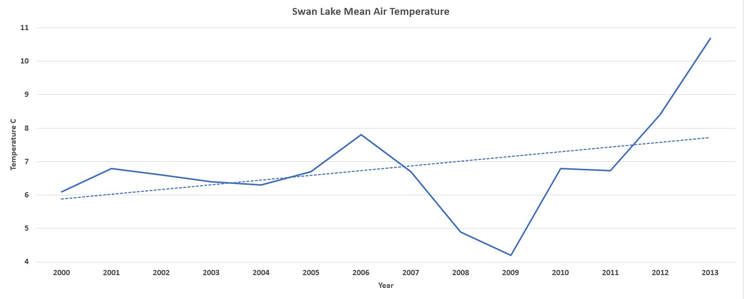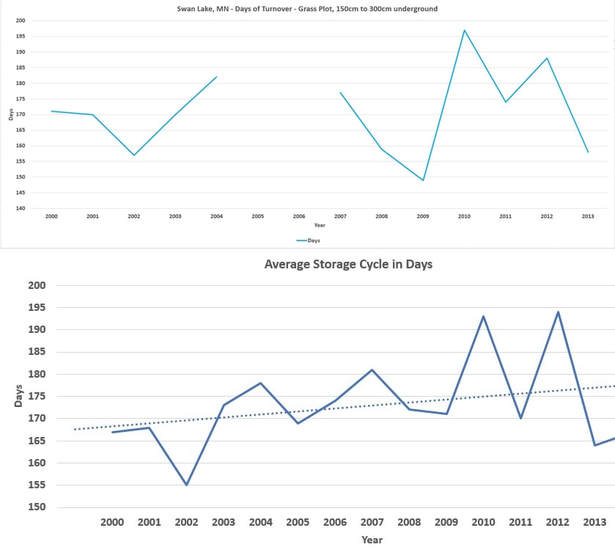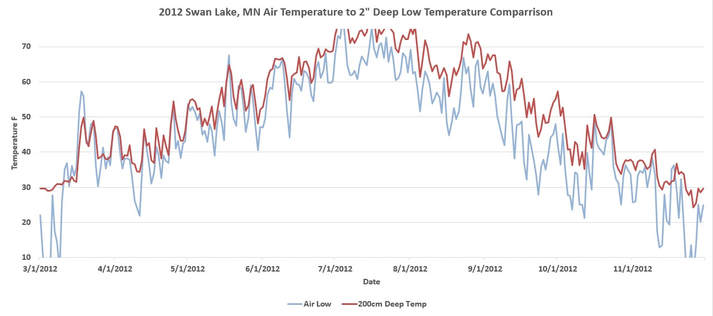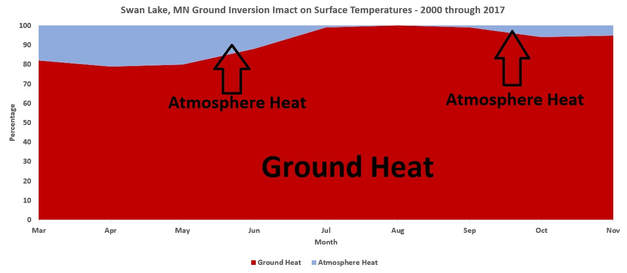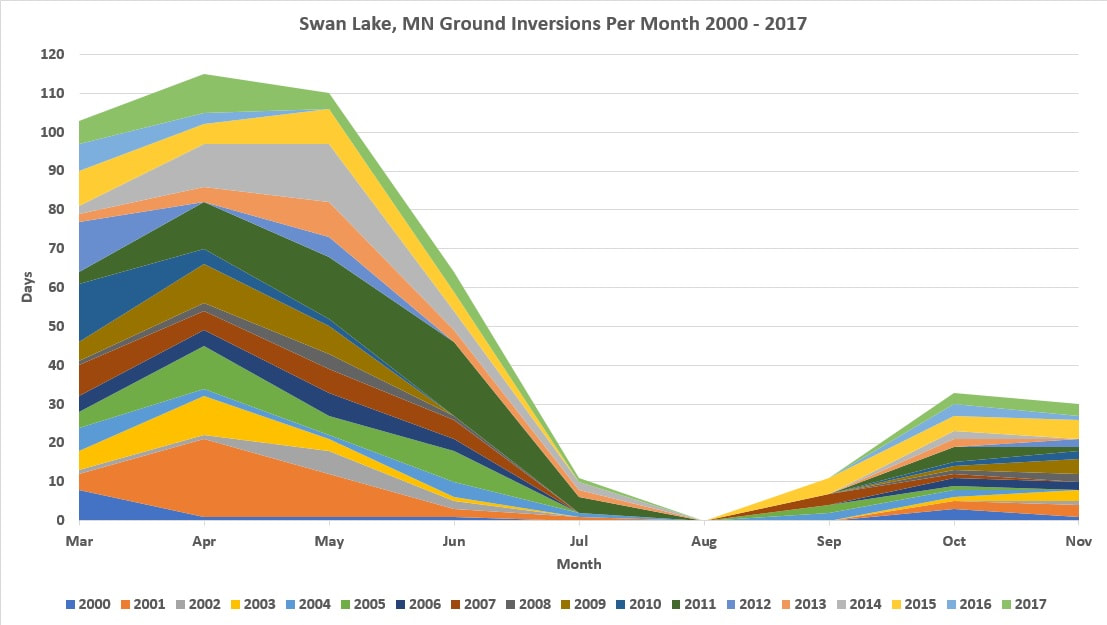United States Department of Agriculture, North Central Soil Conservation
Research Laboratory
Swan Lake Research Farm is located in the North West corner of Section 35, Swan Lake Township, Stevens County (Approximately 6 miles north and 4 miles east of Morris, MN). 45o 41' N Latitude and 95o 48' W Longitude. Elevation 1211 feet. Their site, and shallow depth soil temperatures can be viewed here.
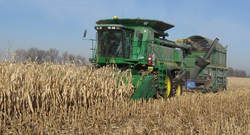
The USDA provides massive amounts of data available, and at Swan Lake they record temperatures from 5cm deep down to 300cm under two separate environments, bare soil and grass plot. Full year data was available from 1998 through 2013 and contained the daily high, low, and mean temperatures for each year.
Located on the western edge of Minnesota, the natural habitat would have been prairie with a mix of forests around the lakes, streams and valleys in this region. Highly productive farming in this region today, the data collected is primarily used for optimizing farm production. This data is used to cross reference and compare with both the St. Paul Climate Observatory and the Marcell Experimental Forest.
Located on the western edge of Minnesota, the natural habitat would have been prairie with a mix of forests around the lakes, streams and valleys in this region. Highly productive farming in this region today, the data collected is primarily used for optimizing farm production. This data is used to cross reference and compare with both the St. Paul Climate Observatory and the Marcell Experimental Forest.
Confirmation of Heat Source
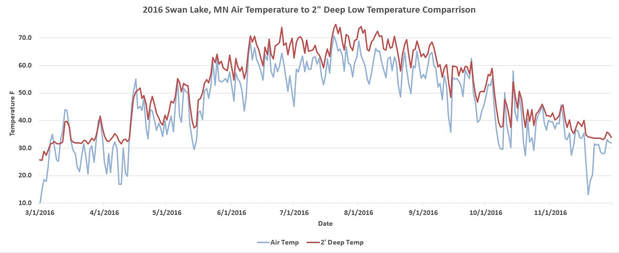
In 2016 the low air temperature at night exceeded the temperature 2" underground on 14 occasions between March 1 and November 30. This is 275 days averaging only 3.7% of the nights. From April 16th to October 10th, the air temperature was never greater than the temperature 2" below ground.
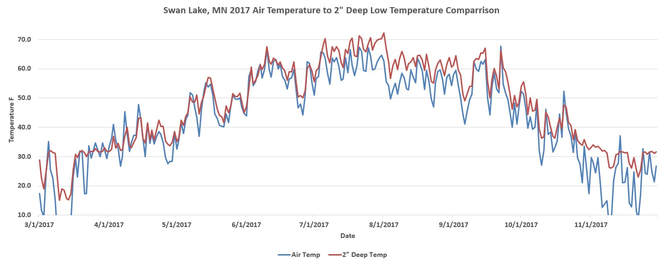
In 2017 there is a noticeable increase and attained an average near the 2000 Climate Observatory data and Minneapolis International Airport records when ground inversions occurred 8% of the nights. During this time the low temperatures at night exceeded the ground temperatures on 32 occasions, or 9.8% of the time. From July 4th to October 12th, the ground temperature continually remained greater than the air temperature.
ENERGY SHIFTS
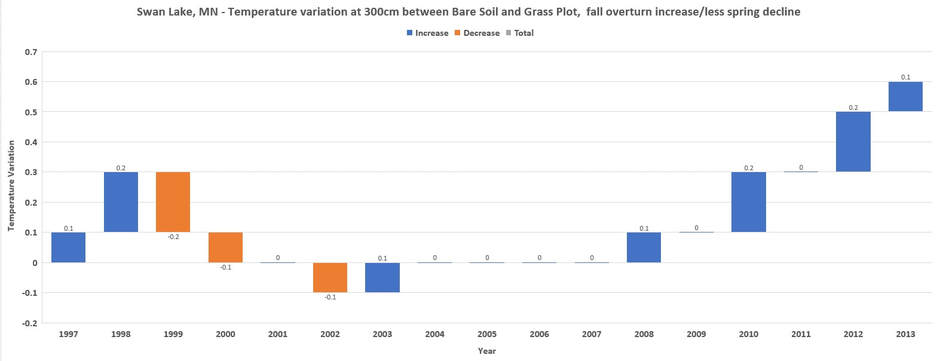
Every spring the grass plot overturns the same day or just after the bare soil, but due to the level of conduction under the bare soil the temperatures are continually lower than the grass plot when this occurs. In the fall, the bare soil switches prior to the grass plot due to the increased temperatures and thermal conduction during the summer. Using the date the grass plot overturns in the spring and fall, and the differentiation in temperatures of the bare soil at that time, the following chart was created. This attains a rough calculation of warming/cooling per year. The St. Paul Climate Observatory is far more accurate and can attain energy differentiation's down to the hour and to depths necessary for accurate measurements. Due to the time frames available the 2013/14 year is not included that would have forced a decline, but since 2007 there is noticeable yearly rise in temperatures.
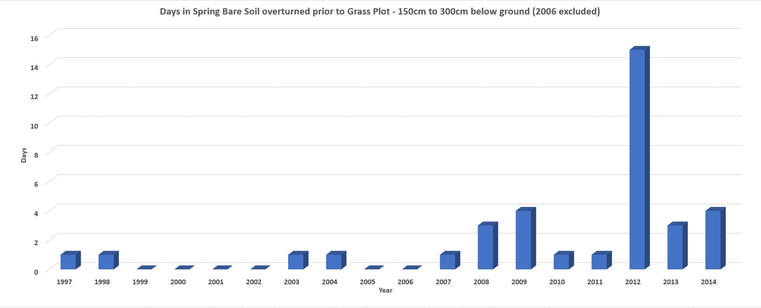
There was a noticeable change in the number of days that the spring overturn event occurs under the bare soil compared to the grass plot. From 1997 through 2007 the switch occurred under bare soil either the same day, or the day after. After 2007 there has been a shift in this pattern and is demonstrated in the graph to the right with a greater delay 5 out of 7 years.
